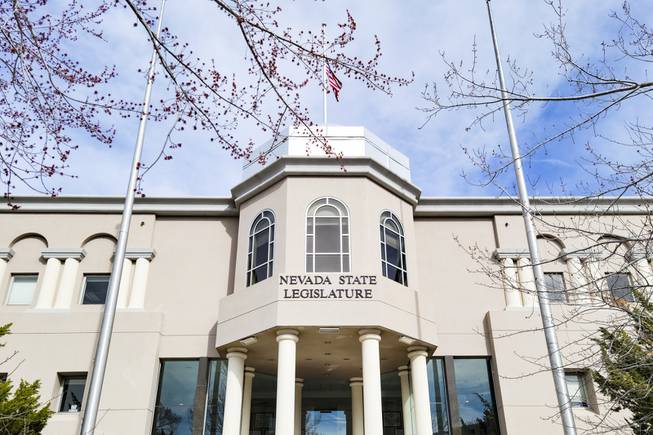
The Nevada State Legislature building in Carson City, NV Friday, April 2, 2021.
Friday, May 26, 2023 | 2 a.m.
Native Americans in Nevada
The Nevada Indian Commission could be elevated to its own department — the Nevada Department of Native American Affairs.
A bill put forth this week by the Assembly Committee on Ways and Means could carve out the new department as soon as July 2024. The committee is set to hear the bill today.
Currently, the Nevada Indian Commission, which serves as a liaison between the state government and Nevada’s Indigenous residents who live on and off reservations, is within the state Department of Tourism and Cultural Affairs. The division includes an executive director, five-person commission appointed by the governor, and a small administrative staff.
Among other duties, the commission and its staff have oversight of the Stewart Indian School Cultural Center & Museum in Carson City. The commission was created in 1965.
Assembly Bill 516 would transfer all responsibilities of the commission to the proposed department and renames them accordingly. The proposed department would otherwise generally maintain its current structure, including the five-member commission body.
The commission, under the reconstituted department, would “provide recommendations and advice to the Executive Director concerning the administration of the Department and on any other matter affecting the social and economic welfare and well-being of American Indians residing in Nevada,” according to the bill.
State agencies devoted to the interests of Native Americans without infringing on tribal sovereignty are common, especially in the West, where census data generally show the highest concentrations of Indigenous residents.
Arizona has a Governor’s Office on Tribal Relations. New Mexico has an Indian Affairs Department. Montana has an Office of Indian Affairs. In Alaska, where at least 13% of residents are Indigenous, there is an 11-member Governor’s Tribal Advisory Council.
A map maintained by the Nevada Indian Commission shows 32 reservations and colonies throughout the state, broadly grouped into the homes of the Nuwu (Southern Paiute), Newe (Western Shoshone), Numu (Northern Paiute) and Wa She Shu (Washoe) peoples. Clark County is on Nuwu land, home to the Las Vegas Indian Reservation and Las Vegas Indian Colony, the Moapa River Indian Reservation, and the Fort Mojave Indian Reservation.
The Nevada Legislature has contemplated several bills this session that center Indigenous concerns.
A bill to allow cultural regalia, including Native American regalia, at school graduations was signed into law this week. A bill to make it easier to report missing Indigenous people to police is pending in the Assembly.
A bill to silence certain government-maintained public address sirens — such as the one in Minden that has a history of being used to force Native Americans out of town around sundown — has received Senate and Assembly committee approval, and needs only an approving vote of the full Assembly before going to the governor’s desk. A bill to codify a state version of the federal Indian Child Welfare Act, in advance of a pending U.S. Supreme Court review that could gut longstanding protections of Indigenous children in the child welfare system, has received similar support.
The Assembly Ways and Means Committee will meet at 8 a.m. today to hear AB 516 and can be streamed at www.leg.state.nv.us/.
